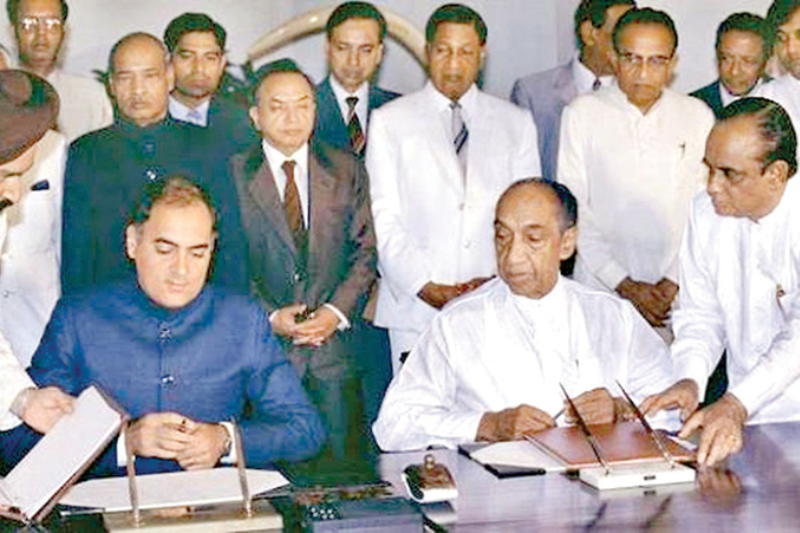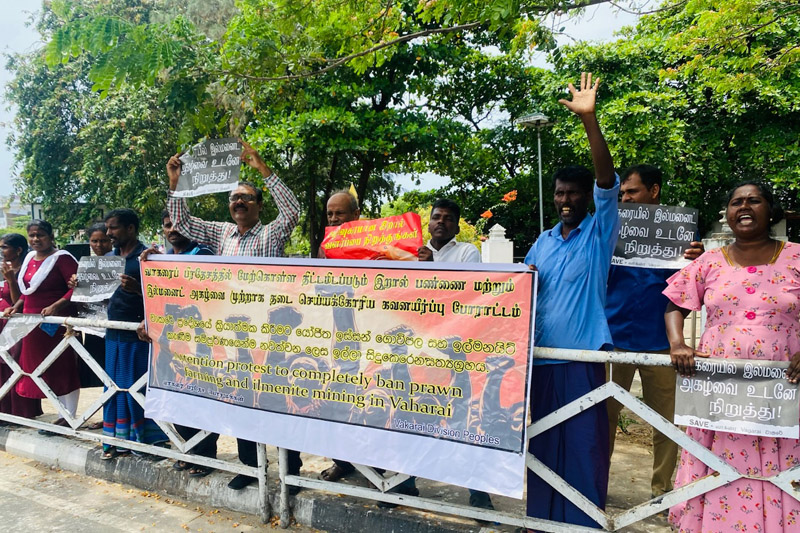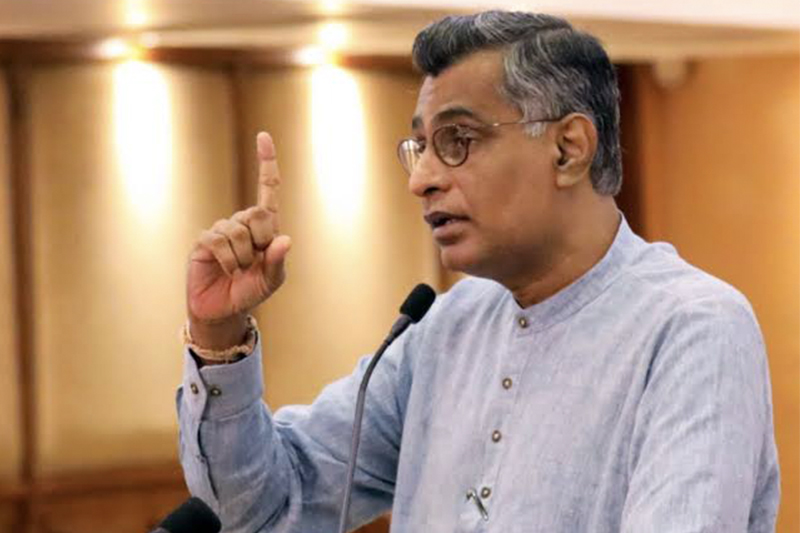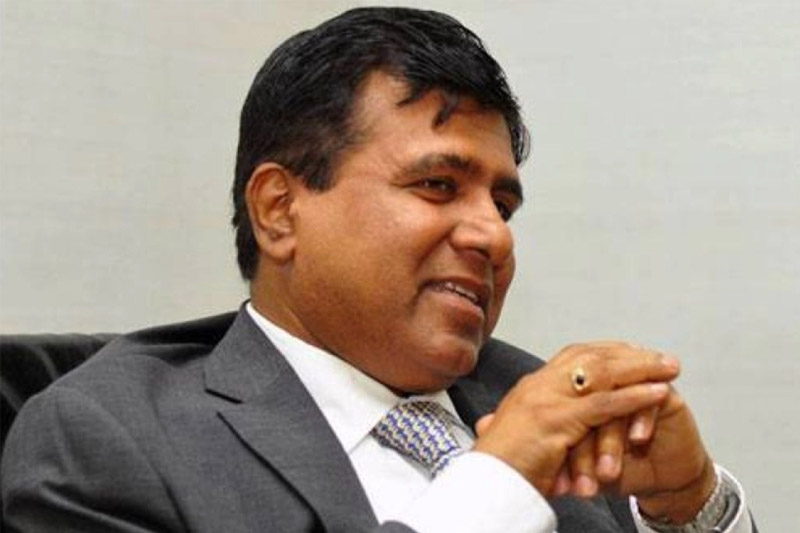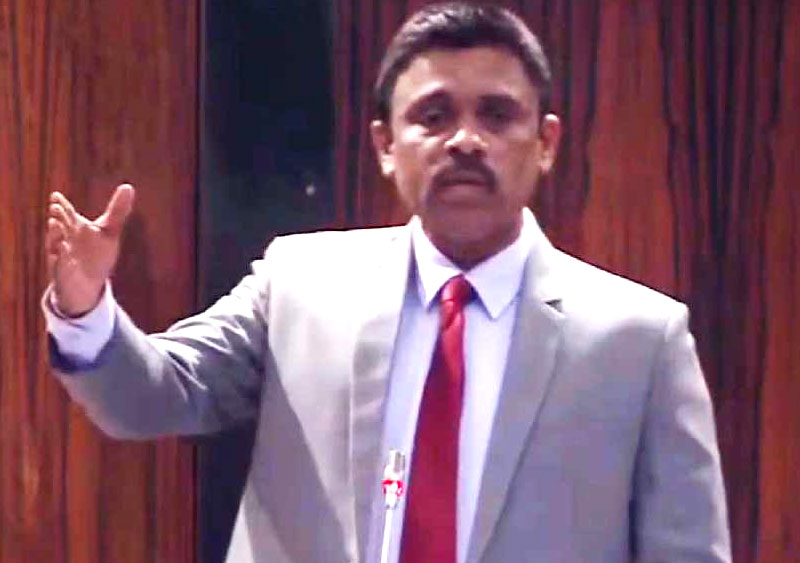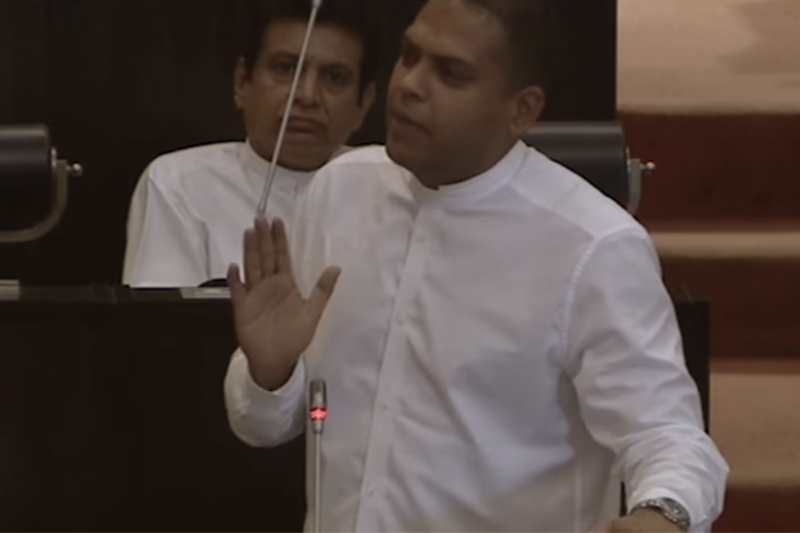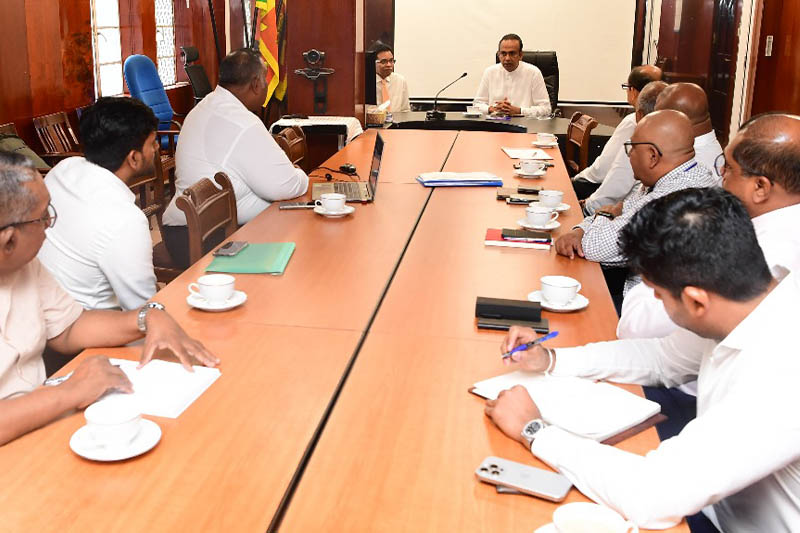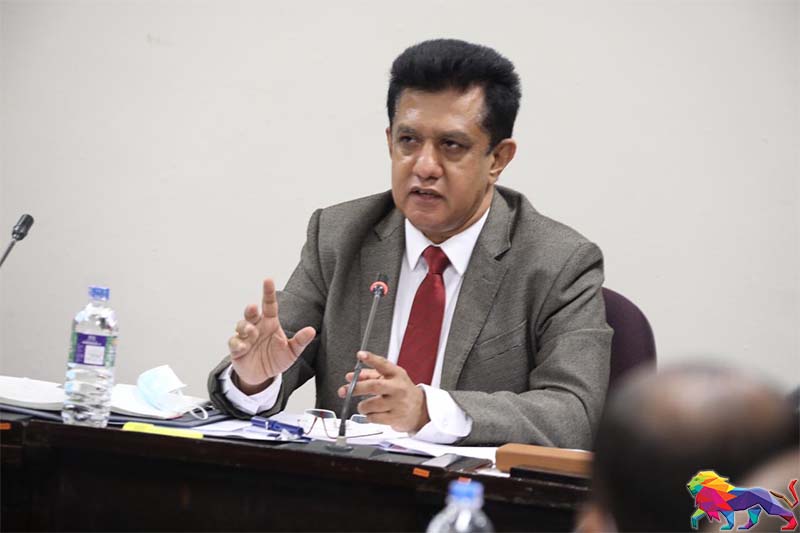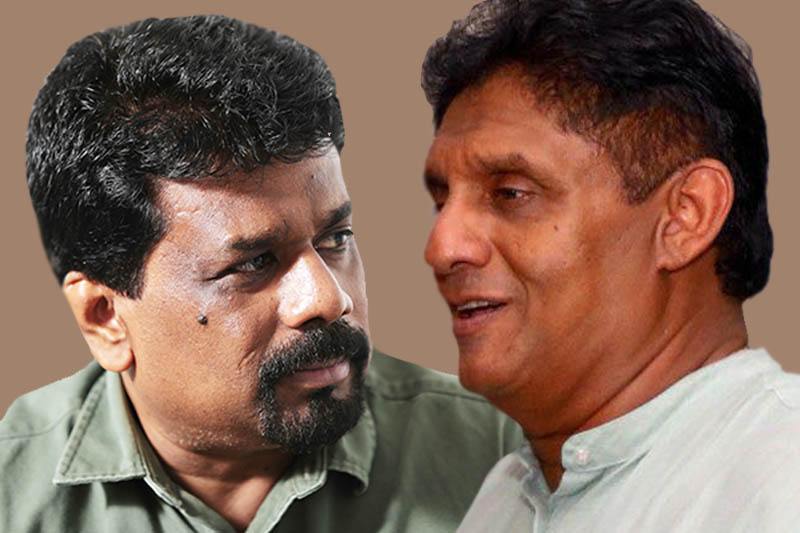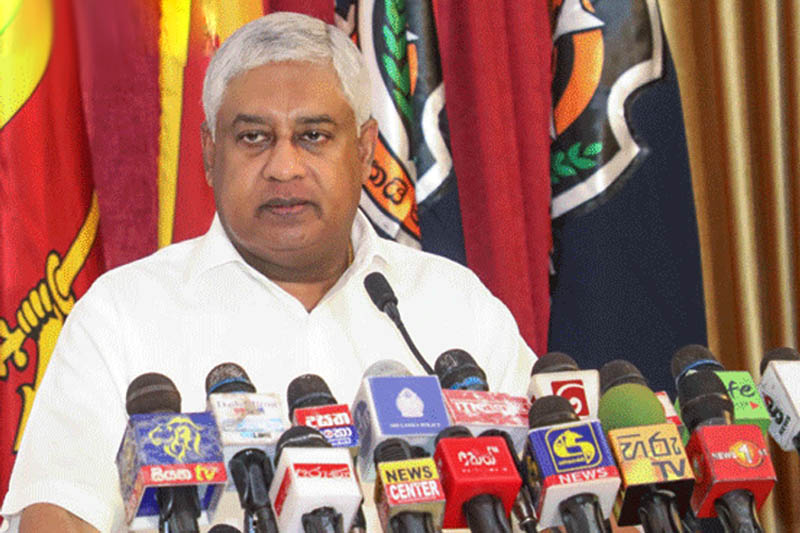The year 1987 was a significant year for Sri Lankan politics – a year that would forever alter the course of the island nation.
It was a time when the very fabric of society was tested, stretched to its limits by the winds of change and conflict. This was the year that would be etched in the collective memory of Sri Lankans, not just as a moment in history but as a turning point defining future generations.
Personally, I would love to forget the 1987-1989 period due to the family tragedy of losing one of my own to the armed rebellion. However, the past is haunting and being reinforced with the present circumstances.
On 29 July 1987, under conditions of severe unrest in the country, two leaders – Sri Lankan President J.R. Jayewardene and Indian Prime Minister Rajiv Gandhi – signed the Indo-Lanka Peace Accord. This was not merely a document; it was hope for a few, a symbol of betrayal for way too many.
The agreement, aimed at resolving the longstanding ethnic conflict in the country, was met with genuine protests, echoing the deep-seated anti-Indian sentiments that had taken root in the heart of the nation. The very next day, an event occurred that would send shockwaves through the political landscape: Prime Minister Gandhi was assaulted by a sailor at the guard of honour – a stark reminder of the simmering tensions that lay just beneath the surface.
But the story does not end there. The Peace Accord, rather than quelling the unrest, acted as a catalyst, igniting the flames of rebellion. The Janatha Vimukthi Peramuna (JVP), a Marxist group with a history of insurrection, found new life in the discontent. The anti-Indian sentiment that had been brewing transformed into a violent uprising, one that would lead to a period of bloodshed and turmoil – the infamous 1988/’89 armed struggle. It was a time of darkness, where fear ruled the streets and spectres of death loomed large over the island.
The JVP’s wrath was indiscriminate, claiming the lives of many, including that of State Pharmaceuticals Corporation Chairman Gladys Jayewardene, a casualty in the group’s crusade against Indian influence. Jayewardene was ordered to stop importing Indian medicines and she refused. The refusal was not taken lightly and she was gunned down. Gladys was no stranger to President Jayewardene – she was his sister-in-law.
Bombay onions, a staple in Sri Lankan cuisine, were banned simply because they were imported from India. This was the absurdity of the times; a testament to the depths of anti-Indian sentiment that had taken hold.
The JR side
Why would I reminisce about 1987 today? Current Leader of the JVP Anura Kumara Dissanayake (AKD) was invited to India and it was the story of the week. AKD’s rise as a front-runner to the presidency in the second half of 2024 is well accepted even by his political enemies. The Indian invitation took political inner circles by surprise, but for a few, it was no secret.
The reason AKD’s visit to India raised eyebrows was due to anyone in Sri Lanka, especially those who remember the ’70s to ’90s, knowing that it was the JVP that instrumentalised the anti-indian narrative in the island. In fact, the JVP had a monopoly on the anti-Indian narrative. Therefore, this visit is intriguing.
AKD’s visit to India forced me to read a book I had read 24 years ago. It was J.R. Jayewardene’s political biography written by two famous authors and historians; Professor K.M. de Silva and William Howard Wriggins. President Jayewardene knew Wriggings for 35 years and de Silva for 25 years. Both de Silva and Wriggins researched for 15 years together to write the Jayewardene political biography, which is a masterpiece, probably one of the best political biographies of the world.
Trained in Edinburgh, de Silva was one of the best historians ever produced by the island nation. Wriggins, a Dartmouth and Yale alum, was the US Ambassador in Sri Lanka from 14 July 1977 to 13 December 1979. A die-hard Democrat, he worked for Hubert Humphrey in the primaries, but 39th US President Jimmy Carter hand-picked Wriggins for Sri Lanka. Both de Silva and Wriggins had an impeccable track record and had never been in question.
This is what both wrote in volume two in page number 646 in the Jayewardene biography: “The opprobrium attached to the Indo-Sri Lankan Accord was focused on its architects within the Government and principally J.R. Jayewardene himself. For his part, JR had no option but to go ahead with the signing. He placed his trust on Rajiv Gandhi’s assurances, which proved, in the end, to be far too optimistic that the Indian Army could sort things out and impose peace in the north and east of the island.”
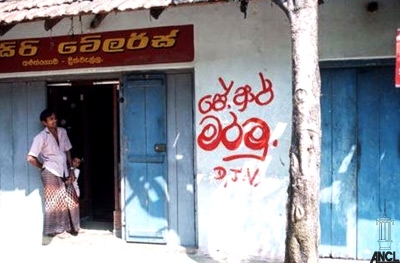
“The JVP, the vocal violent and consistent critics of the accord, called for JR’s assassination through handwritten posters, and inflammatory pamphlets, and speeches (transmitted through cassettes). The slogan ‘Kill JR’ was painted on public highways throughout the island and walls in the public places, in the universities, for example a reminder of a dangerous situation for him and the Government.
“On 18 August 1987, the JVP very nearly succeeded in assassinating him within the Parliamentary Complex when the whole Government parliamentary group including the Cabinet were gathered to discuss the implementation of the accord. Two grenades were lobbed into the room and onto the table at which JR was seated. The first struck the edge of the table and rolled on the carpeted floor and moved thence a short distance from him before it exploded. The second went over the heads of the persons accommodated at the table at which JR was seated and fell on the seats to the left. They rolled thereafter on the isle about 15 yards away.
“The ensuing explosions killed one district minister and several others, including some Cabinet ministers, were seriously injured. The one who suffered the most serious injuries was Lalith Athulathmudali (earlier one MP had been killed on 31 July by the JVP in the violence that broke out in the wake of the signing of the accord). JR himself had a miraculous escape. There was not even a scratch on him, but the hearing in one ear was impaired as a result of the explosion and he took to wearing hearing aids after that.”
The district minister who died in the parliamentary attack was the rising star of Matara, Keerthi Abeywickrama, the uncle of one of my close friends.
The JVP side
The above is the story from the Jayewardene side. I am a great fan of Japanese filmmaker Akira Kurosawa. In his blockbuster movie ‘Rashomon,’ the plot contains four sides to one murder. Let’s delve into the JVP side of the story as per the party literature.
It goes like this.
“In 1987 July, the then President of Sri Lanka was compelled by India to sign the Jayewardene-Rajiv Gandhi accord or the Indo-Lanka Accord that allowed the Indian Army to enter Sri Lankan waters and land. The JVP then had only one option to prevent the abdication of sovereignty and division of Sri Lanka. The JVP took the current discussion to launch an armed struggle to defeat all enemies of Sri Lanka. The majority of the people of Sri Lanka supported the patriotic struggle until it was crushed by the UNP regime, which engaged in paramilitary groups and State-sponsored killer squads to kill more than 60,000 people. Most of the members of the Central Committee and all but one member of the Political Bureau of the JVP were arrested and killed when they were in custody.”
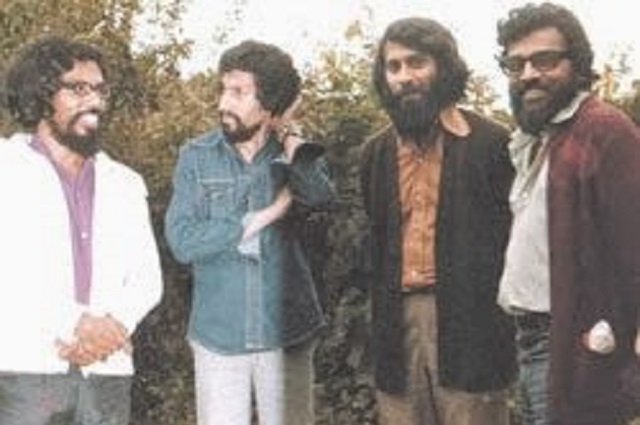
Rohana Wijeweera (L) with his associates. (File Photo)
The JVP was founded in 1965. The Founding Leader of the JVP, Rohana Wijeweera, and key decision-makers of the party in 1967 in Kalaththawa, Anuradhapura made some key decisions. This discourse was known as the ‘Kalaththawa discussion’. This paved the way to conduct five classes to educate the newcomers to the party on its ideological struggle. The five classes were: 1) Crisis in capitalism; 2) Independence is a device of colonialism; 3) Indian expansionism; 4) The left movement in Sri Lanka; and 5) The path the Sri Lankan revolution should take.
There is ample literature about the JVP in Sri Lanka. Last week, the anti-JVP voices took to the press, TV, and social media to question AKD’s visit pivoting the third class, which is Indian expansionism. The tone and the rage of the anti-voices were understandable, as even after AKD became the Leader of the party, the anti-Indian narrative was in heavy play.
More than what’s taking place now, I am curious about why Rohana Wijeweera included Indian expansionism in 1967. Incidentally, 1967 was the year when ‘Iron Lady’ Indira Gandhi was seated as the Prime Minister by the people of India. She took over a country which was experiencing economic hardships and dwindling foreign reserves. The mind-blowing question is why Wijeweera and Co. thought Indian expansionism was a concern for Ceylon. Was it prophetic or just a fluke?
Litmus test of leadership
AKD is visiting India, a country aspiring to be the third-largest economy in the next decade. When Wijeweera thought of India, Indira Gandhi was leading 500 million people. When AKD is flirting with India, Narendra Modi is leading 1.5 billion people with political, social, and economic power expanding globally. Irrespective of the cynicism of AKD’s visit from many corners, this visit can be viewed as a litmus test of his leadership.
Here is a golden opportunity for AKD to showcase he is ready to be the president of Sri Lanka. Here is an opportunity to clearly articulate his non-aligned foreign policy, strategic defence policy, and economic policy to the world at large.
AKD should be open and inclusive. The need for the JVP to be inclusive has been professed by key leader K.D Lalkantha. There are many contradictory views from the JVP/National People’s Power (NPP) in the recent past. This hurts the credibility of the message. Since 1965, the JVP has been mainly talking to a base of 500,000, but AKD needs to appeal to seven million voters. Reaching seven million voters requires heavy compromises. If Sri Lankans had believed in Marxism, the JVP would have been in power a long time ago. However, the circumstances are different.
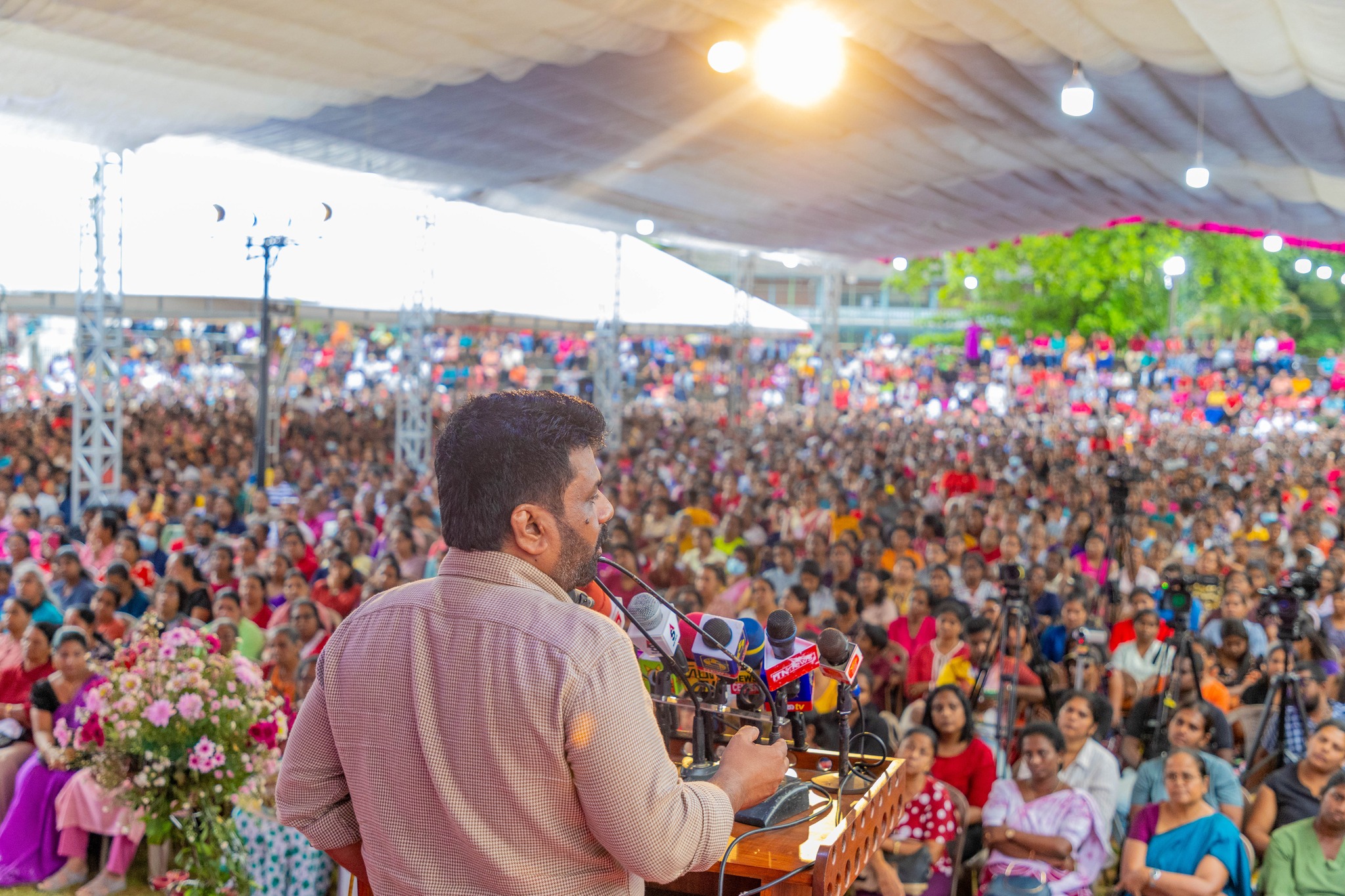
AKD’s political rise is fascinating. AKD the warrior against corruption and the AKD the champion of labour rights need to be different when AKD is president. Since 2016, AKD has been the champion against the Indian-sponsored ETCA, the Chinese-sponsored Port City, and the US-sponsored Millennium Challenge Corporation (MCC). Basically, as per his words, he was on the side of the people of Sri Lanka. Incidentally, Wickremesinghe and Modi are readying to sign off on the ETCA after eight years of negotiations next month. Can AKD continue with the same stand he took before the India visit?
In 1987, the JVP armed struggle was pivoted on the Indo-Lanka Accord, which ended in the loss of 60,000 lives from all sides. The JVP was completely against the 13th Amendment. To please India, AKD needs to betray the party’s founding principles. China has had a longstanding relationship with the JVP since its formation. To please India, AKD has to betray China. Japan and the US have different expectations from Sri Lanka.
Unprecedented times
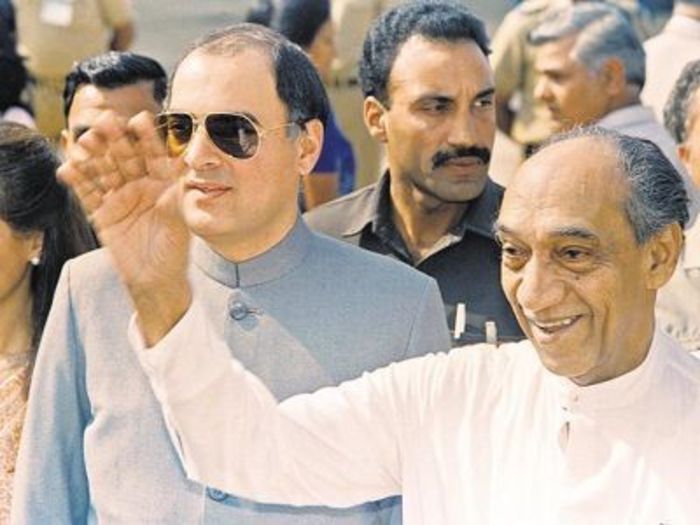
Prime Minister Rajiv Gandhi and President J.R. Jayewardene
Of the two signatories to the 1987 accord, J.R. Jayewardene had a peaceful death and Rajiv Gandhi was brutally assassinated. The man who started the armed struggle, Wijeweera, was murdered with all of his second line except one.
Jayewardene’s nephew, Ranil Wickremesinghe, is the President of Sri Lanka and is planning to contest the next Presidential Election in 2024. Rajiv Gandhi’s son Rahul is running a rough election to be the prime minister of India in April/May. Jayawardene’s deputy, Ranasinghe Premadasa’s son Sajith, is the Opposition Leader of Sri Lanka, and he is also running for presidency this year. AKD, a junior, who avoided militancy in ’88/’89, is running from the JVP for presidency.
These are unprecedented times. Wickremsinghe, Premadasa, AKD, or any other presidential candidate should lay down their policies and voluntarily stand up to scrutiny. There are many in civil society, intellectuals and journalists, to take the lead in scrutiny. Still, Sri Lanka possesses good people who want good for the country. While talking about 1987, we cannot avoid 1983, 1971, and 1956. We cannot avoid talking about 2019.
In 1983, a section of Sinhalese people killed Tamil people. During the civil war, Sinhalese people killed Tamil people, Tamil people killed Sinhalese people, and Tamil people killed Muslim people. In 1971 and 1987, Sinhalese people killed Sinhalese people. In 2019, a few Muslims killed Sinhalese people. Many forget that Tamils too killed Tamil people over the years. All were Sri Lankans.
For some Prabhakaran was a martyr and for others a cold-blooded murderer. For some Wijeweera was a martyr and for others a cold-blooded murderer. For some Jayewardene was a visionary and for others he was a manipulative dictator. For some Ranasinghe Premadasa was a man of the poor and for others a megalomaniac, cold-blooded murderer. For some Mahinda Rajalaksa is a father and for others he is the father of nepotism and corruption and a murderer. The list goes on. Again, all Sri Lankans.
People like Gladys Jayewardene and many more died in vain. Rebels and government military service members fought someone else’s war. Patriotism, segregation, and religion were used to encourage people to do the wrong thing. To capture and retain power, people went to extreme levels. It went to a level where the value of human beings was next to nothing.
What if Wijeweera had been given a rousing welcome by Gandhi in 1987 like AKD was treated in Delhi?
Importance of Indian visit
This is why AKD’s visit to India is important. If, after visiting India, AKD can stand for the Wijeweera philosophy, he will earn a lot of respect. If he comes home and stays silent again and speaks abstractly as usual, there will be a big question mark. If he comes back and says publicly ‘here is what India wants from us, these we agree on and these we can’t agree on,’ his stock will rise further.
AKD’s big leadership moment will be when Wickremesinghe and Modi sign the ETCA, possibly next month. AKD and the JVP have been against the ETCA from the inception. If he does not side with India, he will lose India. If he sides with the ETCA, his reputation is bound to erode. The ETCA and MCC were famous showstoppers from 2015 to 2019, during the Sirisena-Wickremesinghe Government. The JVP played a significant role in scuttling both.
The same balancing act should be done with China, Japan, and the US as well. Sri Lanka will not be able to please all, but surely it can please itself without hurting others. Adding to the misery, the Russians are back in Sri Lanka. Former Leader of the JVP, firebrand Wimal Weerawansa, with his love for Russia, publicly attacked India and AKD’s newfound love affair.
Great leaders will invariably have the guts to say no. Great leaders are not born but made through humility and flexibility and learn from others. Self-confession is no weakness. The great Mandela, a man known for a violent past, did before he took over the reigns of South Africa. Leaders can make mistakes and take missteps. AKD needs to be clear to the people of the country. He should do that, because he is a paragon of virtue in the eyes of the public. This is his chance to shine. This is his chance to address the uncomfortable truth.
The fifty shades of AKD are worth watching.
Saliya Weerakoon

*The article was first published on the Sunday Morning.

